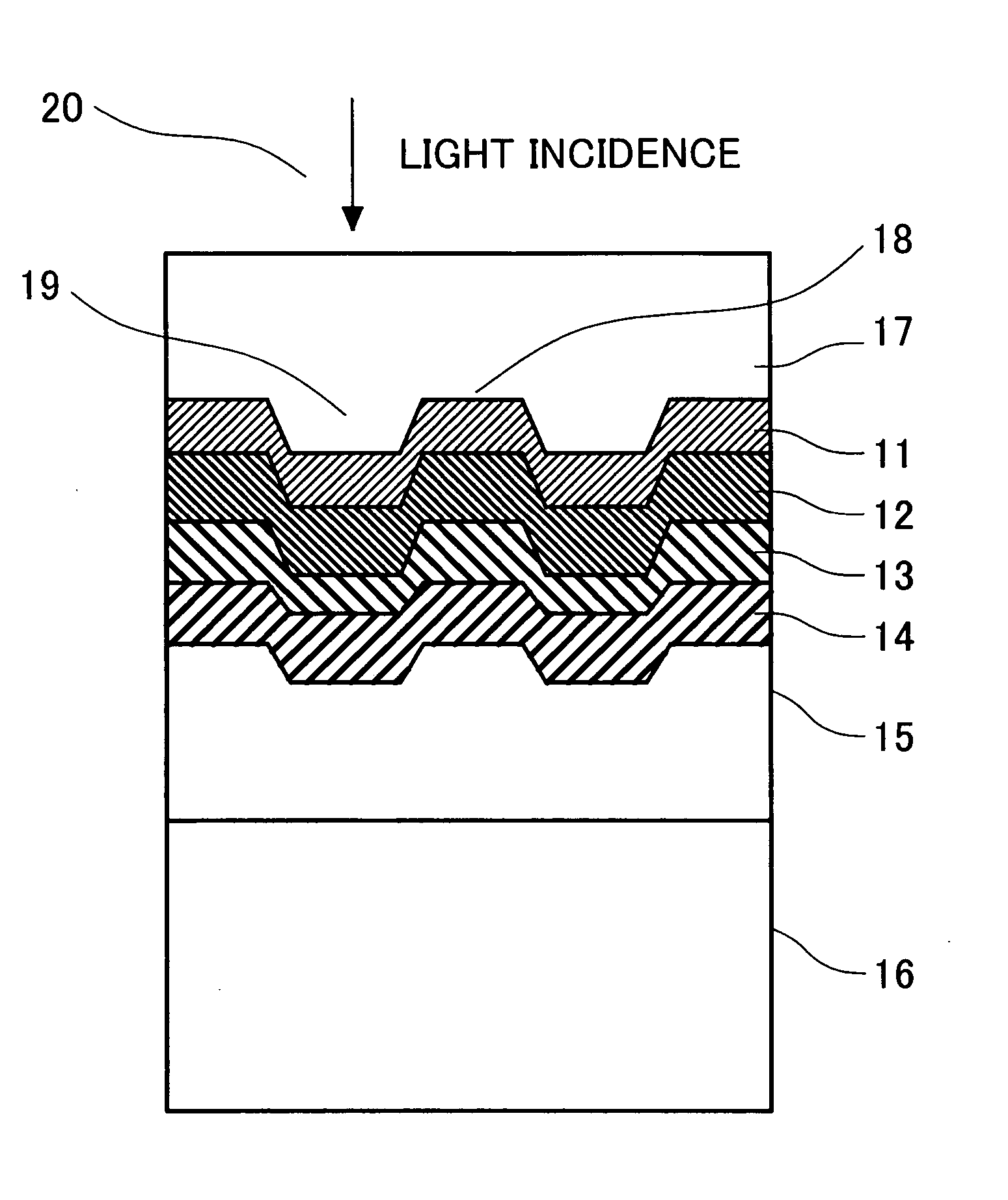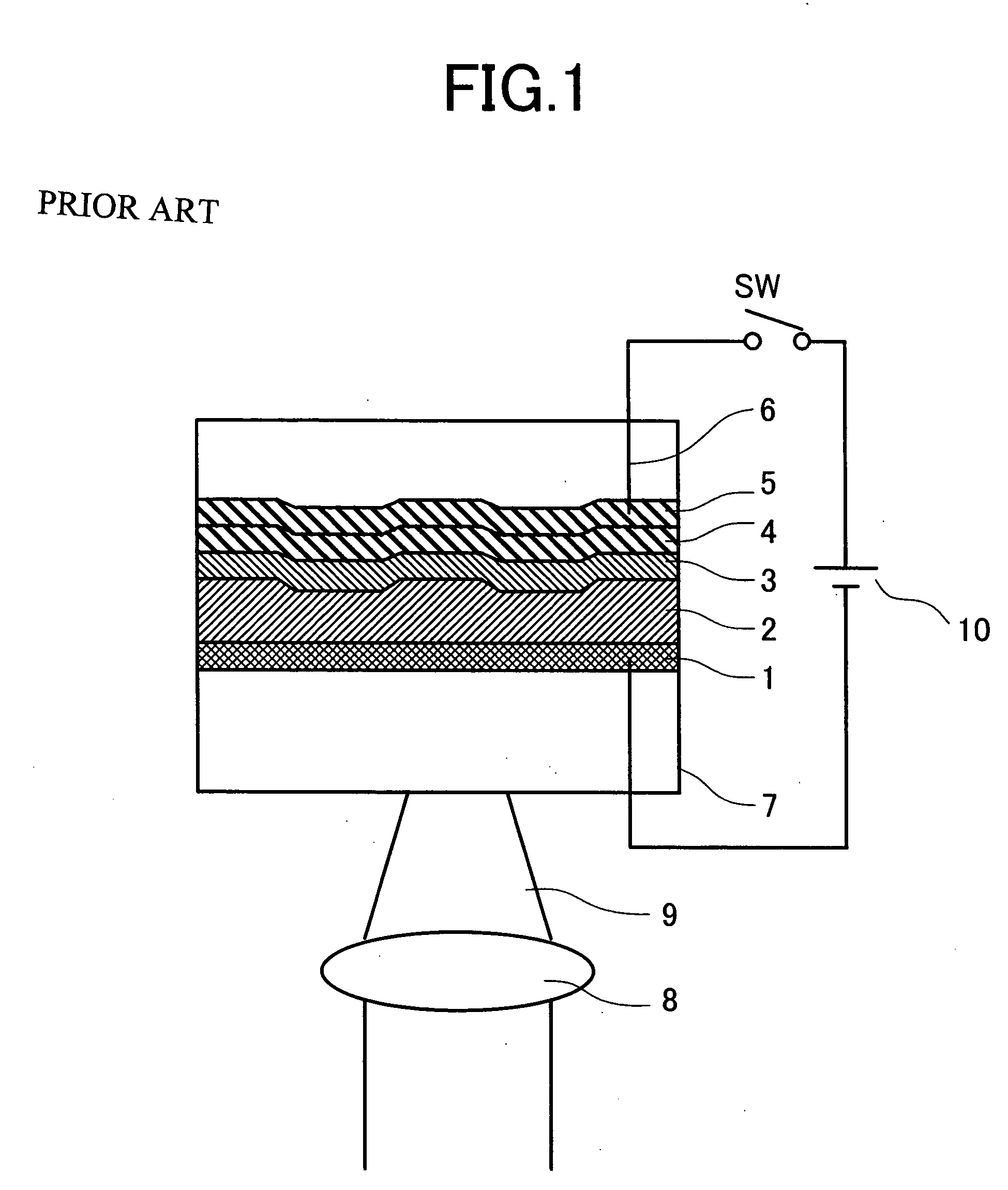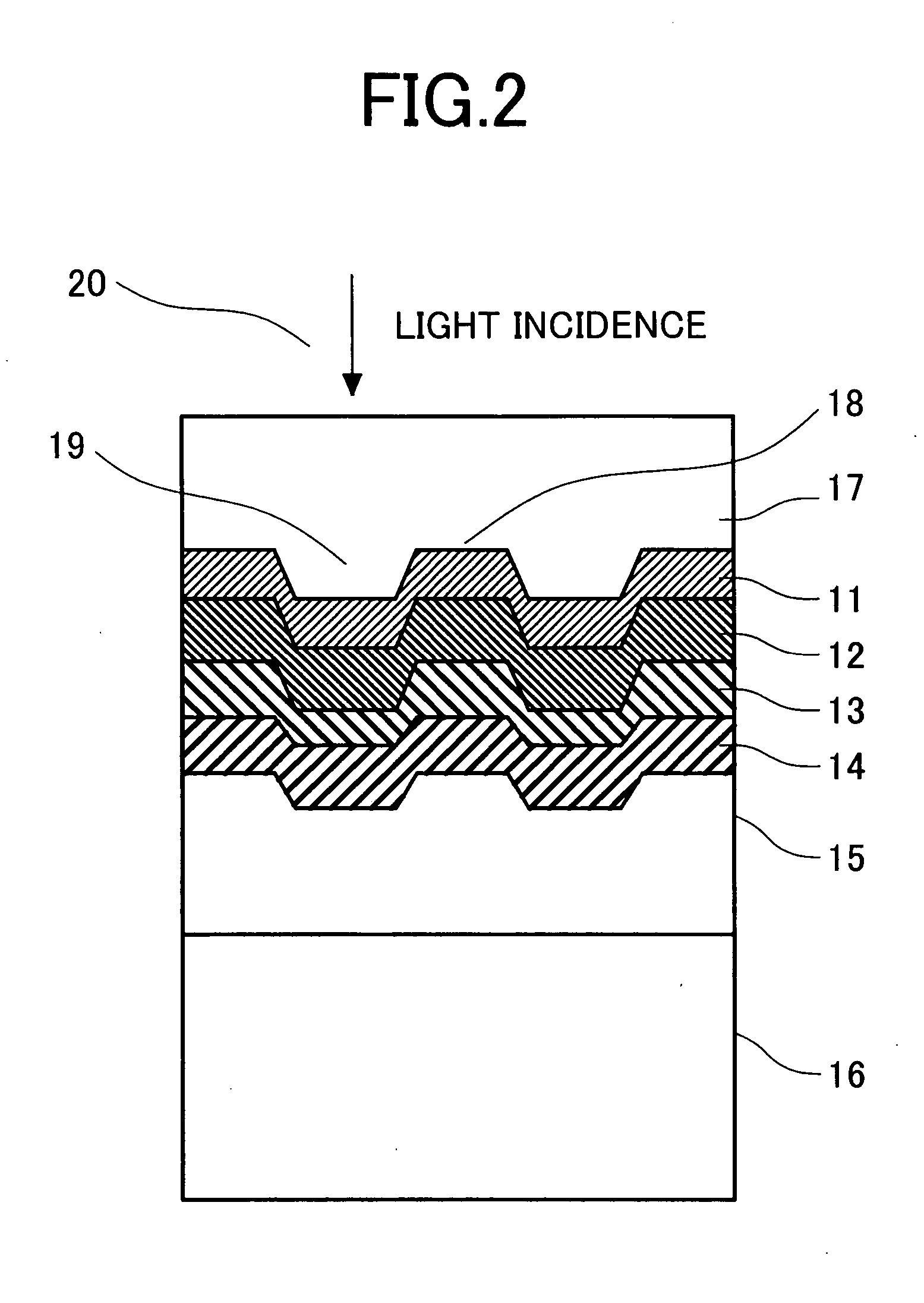Information recording medium having pair of electrodes
a technology of information recording and electrodes, applied in the field of media, can solve the problems of difficult follow-up of the optical disk with auto-focusing and tracking, prone to occur, and unavoidable problems for the optical disk to be confronted
- Summary
- Abstract
- Description
- Claims
- Application Information
AI Technical Summary
Benefits of technology
Problems solved by technology
Method used
Image
Examples
first embodiment
(Structure and Fabrication Method)
[0052]FIGS. 4 and 5 show structures of a disk-shaped information recording medium in the first embodiment of the present invention. FIG. 4 shows a ¼ size view of the structure of the disk and FIG. 5 shows an expanded view of the ¼ size portion of the disk. In FIG. 4, only two upper radial-patterned transparent electrodes 33,34 are shown while many more are disposed actually all over the disk surface. A light for recording / reading is irradiated from above through the substrate while the top substrate is not shown in FIG. 4. FIG. 5 shows an expanded view of part of the disk. Also in FIG. 5, the top substrate and the insulator layer are not shown so as to simplify the description. In FIG. 5, reference numerals are defined as follows; 45 denotes a reflection electrode, 43 denotes a recording layer, 44 denotes an insulator layer, 42 denotes a photo-conductor layer, 41 denotes a transparent electrode, 46 and 50 denote light spots, 47 denotes a groove ar...
second embodiment
[0097] This second embodiment relates to a multi-layer recording medium and a recording apparatus that uses the medium.
[0098]FIG. 16 shows a structure of the recording apparatus around the rotary shaft in this embodiment. As described with reference to the block diagram of the applied voltage reversing and controlling circuit in FIG. 15, the recording apparatus supplies both plus and minus voltages and recording medium layer selection signals to three slip rings 72 to 74 of the rotary shaft. The maximum current applied to the rotary shaft from the circuit sboard of the recording apparatus can be reduced even when in fast coloring / decoloring by charging the current in a capacitor once, since the coloring / decoloring time is shorter than the recording time keeping the colored state. The circuit that includes such a capacitor as shown in FIG. 15 is built in the hollow space of the disk receiving part 78 and the wiring to each layer shown at the right end side of the block diagram is co...
third embodiment
[0121] In this third embodiment, as shown in FIG. 14, the laser 91 is attached on a surface slightly inclined from the right angle of the rotary shaft of the mirror driving motor 95 so that the laser beam 93 is reflected so as to be moved in a circular or elliptic pattern by the mirror 94 that rotates fast. A light spot is then formed by a 4×6 reflection mirror array 97 made of a silicon crystal in accordance with one of the MEM techniques, thereby information is recorded in the medium fast without moving the recording medium fast. In FIG. 14, reference numerals are defined as follows; 92 denotes a lens, 96 denotes an array selection mirror, 98 denotes a Si wafer, 99 denotes a cross sectional view of a recording layer film. The shape of the entire medium is not disk-like, but it is rectangular. Each mirror is driven by an electrostatic or electromagnetic force generated from a transistor array disposed just under the mirror.
[0122] Many cone-shaped recesses are formed and disposed r...
PUM
| Property | Measurement | Unit |
|---|---|---|
| thickness | aaaaa | aaaaa |
| electric current | aaaaa | aaaaa |
| recording speed | aaaaa | aaaaa |
Abstract
Description
Claims
Application Information
 Login to View More
Login to View More - R&D
- Intellectual Property
- Life Sciences
- Materials
- Tech Scout
- Unparalleled Data Quality
- Higher Quality Content
- 60% Fewer Hallucinations
Browse by: Latest US Patents, China's latest patents, Technical Efficacy Thesaurus, Application Domain, Technology Topic, Popular Technical Reports.
© 2025 PatSnap. All rights reserved.Legal|Privacy policy|Modern Slavery Act Transparency Statement|Sitemap|About US| Contact US: help@patsnap.com



